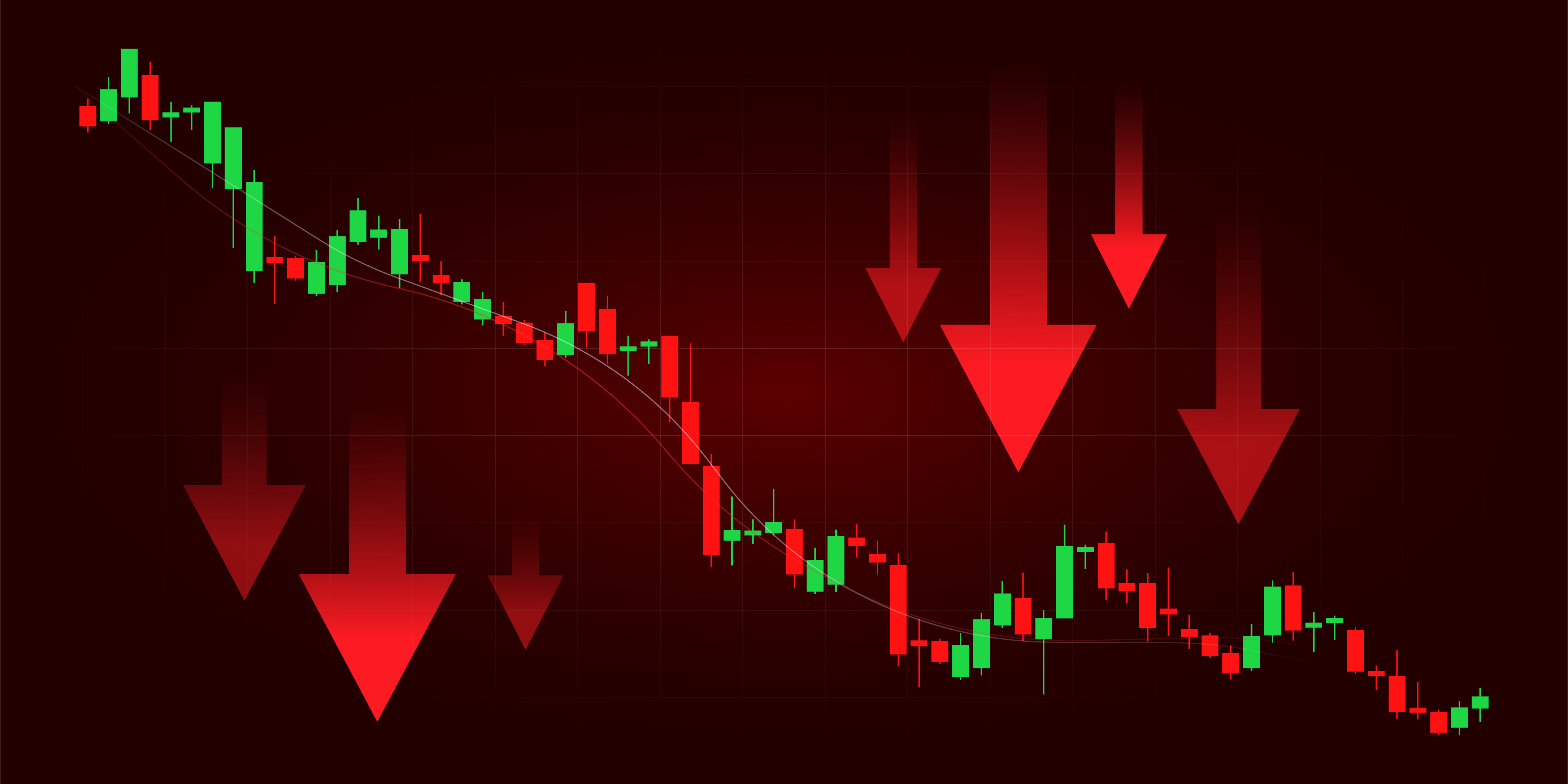The Best Growth Stocks to Buy
Growth stocks can create significant returns for investors, but what are they and how do you find the best ones? We take a closer look here.


You almost certainly started investing in the stock market to grow your money, so shouldn't you want to put that money in … well, growth stocks?
Yes. OK, probably. But it depends. It's not that straightforward.
The goal of just about every publicly traded company is to grow – grow revenue, grow profits, and hopefully, as a result, grow their share price.
From just $107.88 $24.99 for Kiplinger Personal Finance
Be a smarter, better informed investor.

Sign up for Kiplinger’s Free Newsletters
Profit and prosper with the best of expert advice on investing, taxes, retirement, personal finance and more - straight to your e-mail.
Profit and prosper with the best of expert advice - straight to your e-mail.
The reality is much hazier.
Some companies succeed with flying colors, delivering explosive sales and earnings growth for many, many years.
Others manage to expand their top and bottom lines consistently but modestly. Still others go through cycles of expansion and contraction.
And an unfortunate few eventually find themselves in terminal decline, never to produce growth again.

I am the Editor-in-Chief of WealthUp, a financial literacy site. I have spent over a decade in financial media, including my previous role as senior investing editor for Kiplinger.com. Over this time, I have covered a wide variety of investing topics, including analyzing equities, bonds and exchange-traded funds (ETFs) such as those picked for this list of the best growth stocks.
That makes researching and selecting growth stocks much more difficult than meets the eye.
Today, we'll explore the concept of growth investing, including how it's defined, why investors are drawn to it, ways in which investors evaluate growth, and how to find the best growth stocks to buy.
Company (ticker) | Long-term EPS growth rate | Number of covering analysts | Analysts' consensus recommendation |
ServiceNow (NOW) | 29.9% | 61 | 1.49 |
Ventas (VTR) | 26.1 | 24 | 1.47 |
GE Aerospace (GE) | 18.7 | 25 | 1.47 |
Meta Platforms (META) | 16.8 | 82 | 1.46 |
Allegro MicroSystems (ALGM) | 35.7 | 14 | 1.46 |
Darling Ingredients (DAR) | 33.0 | 16 | 1.46 |
MKS (MKSI) | 16.9 | 15 | 1.46 |
KKR & Co (KKR) | 21.9 | 25 | 1.46 |
TKO Group Holdings (TKO) | 89.6 | 19 | 1.45 |
Iridium Communications (IRDM) | 28.5 | 12 | 1.44 |
HealthEquity (HQY) | 20.8 | 18 | 1.43 |
Nvidia (NVDA) | 28.8 | 88 | 1.42 |
Targa Resources (TRGP) | 36.7 | 26 | 1.41 |
DexCom (DXCM) | 22.8 | 31 | 1.41 |
Integer Holdings (ITGR) | 18.4 | 12 | 1.40 |
Burlington Stores (BURL) | 17.7 | 20 | 1.40 |
Broadcom (AVGO) | 23.1 | 56 | 1.37 |
Amazon.com (AMZN) | 18.0 | 85 | 1.36 |
CareTrust REIT (CTRE) | 16.8 | 11 | 1.33 |
How to find the best growth stocks to buy
Sure, you can buy up large-cap stocks in bulk via growth ETFs and mutual funds. Indeed, more risk-averse investors would do well to do that because it can lessen the chances that disaster in one or two equities will destroy a significant portion of their portfolio.
But if you're risk-tolerant and looking to generate some outperformance in your portfolio, concentrated investments in one or a couple of individual stocks will do the job more effectively.
And we can help you start your search with a basic quality screen.
To get to the following list of growth stocks, we've looked for companies …
Within the S&P 1500: The S&P 1500 is made up of the S&P 500, S&P MidCap 400 and S&P SmallCap 600. In other words, our search will include a wide variety of large- and mid-cap stocks, as well as the market's larger small-cap stocks.
With a long-term estimated earnings-per-share growth rate of at least 15%: Because we're looking for growth stocks to invest in and not just short-term trades, we want to set a high bar for earnings growth across several years.
Just remember that expectations aren't a guarantee of results.
With at least 10 covering analysts: We'd like to look at stocks that are on Wall Street analysts' radar, which makes it likelier that there's both more reporting and more insights on these companies.
The more research we have at our disposal, the more educated a decision we can make.
With a consensus Buy rating: All of the stocks must have an average broker recommendation of 1.5 or less within S&P Global Market Intelligence's ratings scale.
This average indicates a Strong Buy – the highest designation – meaning they are some of analysts' top stocks to buy.
What are growth stocks?
Growth stocks are – and we promise this isn't a cop-out answer – stocks that exhibit growth characteristics.
You'll find similar language in prospectuses for growth funds, whether they're actively managed or ones that track an index.
Depending on the fund, those characteristics will be different.
Among some of the most common growth metrics?
Revenue growth: How rapidly is the company improving the rate at which it sells its products and/or services?
This is as simple as growth gets.
Earnings growth: How rapidly is the company improving its profits/earnings/net income? On the one hand, this isn't as direct a measure of growth, as it also factors in things like cost of revenue, operating expenses (like R&D), taxes, interest and more.
On the other hand, a company eventually needs to be profitable to remain in business.
And profits can be redistributed to investors in the form of stock buybacks and dividends.
Free cash flow (FCF) growth: Free cash flow is the money left over after a business pays its operating expenses and any capital expenditures.
And some investors prefer to see growth in this metric because, unlike net income (and, to an extent, even revenue), it can't be easily skewed by accounting adjustments.
Net profit margin: This metric speaks to how well a company can turn revenue into profits. It's determined by a host of factors, such as pricing power, input costs, efficiency of operations and more.
While net profit margin doesn't necessarily look at growth, having a high net profit margin typically leads to excess earnings, which as mentioned above, can be plugged back into the company to spark even more expansion.
Return on equity (ROE): ROE is another measure of profitability. You calculate ROE by taking a company's net income and dividing it by shareholders' equity.
The general idea here is that the higher a company's ROE, the better job management is doing at turning equity financing into earnings.
Not only do different investors favor different growth characteristics, but they might also favor different time elements.
For instance, some funds will invest in stocks where, say, the past year's earnings, revenue and free cash flow growth exceed certain thresholds. Others will only invest in stocks where long-term projections for earnings, revenue and FCF growth clear a certain bar.
And some will combine the two, perhaps demanding its holdings exceed a certain historical return on equity while also requiring holdings to have a certain level of estimated earnings and revenue growth.
You've heard the saying "past performance isn't an indicator of future returns." That goes for a company's operational results, too. A company that grew revenue by 30% last year isn't guaranteed to grow it at all this year, so past data can be a flawed way to evaluate stocks.
On the other hand, estimates are clearly less concrete than actual results – and while Wall Street professionals do their best to get it right, companies can and do miss expectations.
Past financial metrics, there are other qualities investors want to look for when evaluating growth stocks.
These include innovative and even disruptive products (products that are either better than those that currently exist, or products that define a new category and make other products obsolete), strong competitive positions (a unique value proposition that other companies can't match), and visionary founders, CEOs and other management.
Why do investors buy growth stocks?
The answer here is pretty straightforward: If a company is expected to grow its revenue, profits and other metrics over time, it (and thus its shares) should be worth more over time – allowing investors to sell their stock for a better price down the road.
Growth stocks, which in theory should flourish at a faster pace than other equities, have the potential to deliver a higher degree of growth, a more rapid pace of growth, or even both.
Historically, though, growth stocks' performance is cyclical, experiencing years' worth of outperformance vs value stocks, but also suffering yearslong slumps compared to their cheaper brethren.
In a short whitepaper, Hartford Funds outlines a couple of examples: "Growth stocks outperformed in the '90s during the dot-com era and have performed extremely well for more than a decade. Value stocks outperformed from 2001-08 as investors placed a greater value on dividends and stock valuations."
And even during the most favorable periods for growth stocks, they still come with outsized risk. Especially if growth equity is determined by estimates for swift operational improvement.
Should the company report substandard results and fall short of expectations, investors might rapidly sell off shares and begin searching for other growth opportunities.
Growth stocks vs value stocks
The U.S. stock market alone consists of more than 12,000 publicly traded equities. That's a simply undigestible number of potential investments with no real common thread, so investors tend to slice and dice them to get to smaller, more defined groups in order to find the best stocks to buy.
And one of the oldest market divisions is between growth stocks and value stocks.
Value stocks are companies that the market believes are underappreciated – that they trade below some inherent measure of value.
Growth stocks aren't inherently the opposite of that. Growth stocks are merely defined by their growth attributes.
But while growth stocks can be undervalued, they typically aren't – indeed, they're usually overpriced – and thus growth and value stocks are considered opposite sides of a coin.
Related content
Profit and prosper with the best of Kiplinger's advice on investing, taxes, retirement, personal finance and much more. Delivered daily. Enter your email in the box and click Sign Me Up.
Kyle Woodley is the Editor-in-Chief of WealthUp, a site dedicated to improving the personal finances and financial literacy of people of all ages. He also writes the weekly The Weekend Tea newsletter, which covers both news and analysis about spending, saving, investing, the economy and more.
Kyle was previously the Senior Investing Editor for Kiplinger.com, and the Managing Editor for InvestorPlace.com before that. His work has appeared in several outlets, including Yahoo! Finance, MSN Money, Barchart, The Globe & Mail and the Nasdaq. He also has appeared as a guest on Fox Business Network and Money Radio, among other shows and podcasts, and he has been quoted in several outlets, including MarketWatch, Vice and Univision. He is a proud graduate of The Ohio State University, where he earned a BA in journalism.
You can check out his thoughts on the markets (and more) at @KyleWoodley.
-
 Ask the Editor, October 17: QCDs and Tax-Planning
Ask the Editor, October 17: QCDs and Tax-PlanningAsk the Editor In this week's Ask the Editor Q&A, Joy Taylor answers more questions about the use of qualified charitable distributions (QCDs) in end-of-year tax planning.
-
 You May Want To Think Twice Before Selling These Four Assets in Retirement
You May Want To Think Twice Before Selling These Four Assets in RetirementSitting on little gold mines? It's natural to want to cash out when you retire. Here’s why you may not want to.
-
 I Bought Palantir When It Was Trading at $8. Now It's $180 and I've Made $1 Million. What Do I Do?
I Bought Palantir When It Was Trading at $8. Now It's $180 and I've Made $1 Million. What Do I Do?What do you do with all that appreciated Palantir stock? We asked a financial expert for advice.
-
 Treat Home Equity Like Other Investments in Your Retirement Plan: Look at Its Track Record
Treat Home Equity Like Other Investments in Your Retirement Plan: Look at Its Track RecordHomeowners who are considering using home equity in their retirement plan can analyze it like they do their other investments. Here's how.
-
 Why Does It Take Insurers So Darn Long to Pay Claims? An Insurance Expert Explains
Why Does It Take Insurers So Darn Long to Pay Claims? An Insurance Expert ExplainsThe process of verification, investigation and cost assessment after a loss is complex and goes beyond simply cutting a check.
-
 Two Reasons to Consider Deferred Compensation in the Wake of the OBBB, From a Financial Planner
Two Reasons to Consider Deferred Compensation in the Wake of the OBBB, From a Financial PlannerDeferred compensation plans let you potentially lower your current taxes and help to keep you out of a higher tax bracket. It's important to consider the risks.
-
 Dow Sinks 301 Points on Trade War Talk: Stock Market Today
Dow Sinks 301 Points on Trade War Talk: Stock Market TodayThe contentious relationship between the world's two biggest economies continues to drive global financial markets.
-
 The Best Gold Mutual Funds to Buy Right Now — And When to Choose An ETF Instead
The Best Gold Mutual Funds to Buy Right Now — And When to Choose An ETF InsteadGold mutual funds offer investors exposure to the yellow precious metal, which has been red-hot this year. But a caveat is required.
-
 Financial Fact vs Fiction: The Truth About Social Security Entitlement (and Reverse Mortgages' Bad Rap)
Financial Fact vs Fiction: The Truth About Social Security Entitlement (and Reverse Mortgages' Bad Rap)Despite the 'entitlement' moniker, Social Security and Medicare are both benefits that workers earn. And reverse mortgages can be a strategic tool for certain people. Plus, we're setting the record straight on three other myths.
-
 The End of 2%? An Investment Adviser's Case for Why the Fed Should Raise Its Inflation Target
The End of 2%? An Investment Adviser's Case for Why the Fed Should Raise Its Inflation TargetYes, inflation can be tough on those living on fixed incomes, but protecting us from it too strictly could do our overall economy more harm than good.